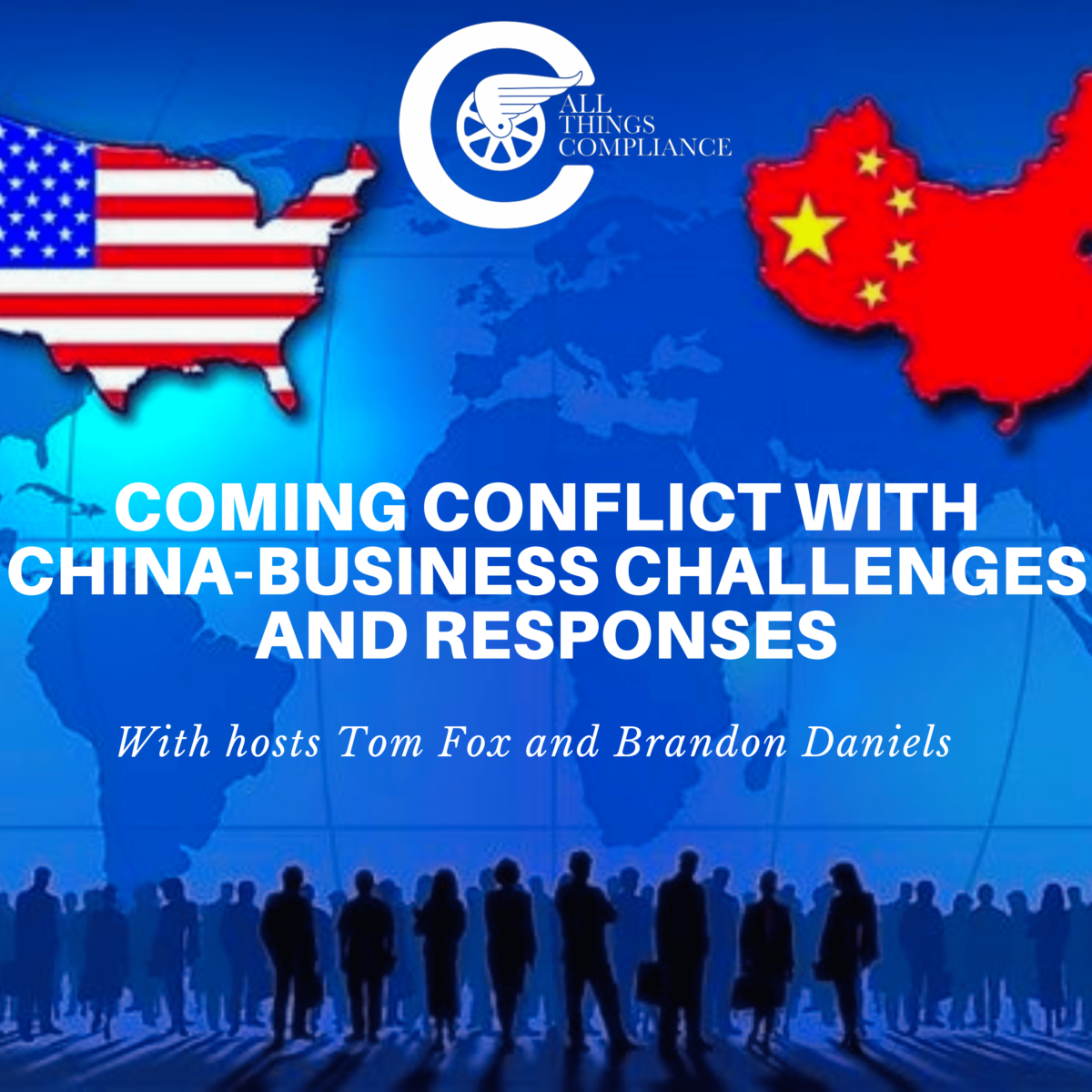In the short span of the 21st Century, the world’s two top powers, the United States and China, have moved inexplicably toward a showdown. This evolved from a commercial competition into something more akin to permanent non-kinetic warfare. What does this mean for US business doing business in and with China? For this special 5-part blog post series, I visited with Brandon Daniels, CEO and President of Exiger, to explore issues diverse as a real danger, supply chain, exports, cyber-attacks, and IP theft from the business perspective and give the compliance and business executive their viewpoints on what you can do to not only prepare your company but protect it as well. In Part III, we consider export issues of US companies and rebalancing the global economy.
The US exported $149,000,000,000 to China in 2021, but do trade deficits still matter in this new era of economic conflict? The US-China conflict is intensifying, and as a result, businesses that export to China are feeling the strain. What happens when your biggest customer isno longer available? How do you go about finding new markets and reshoring customers? In this post, we explore the delicate balance between US and Chinese relations and the tools US businesses need to protect their intellectual property and commodities from Chinese counterfeiting.
What are some of the steps you can take around export issues.:
- Determine what to buy and sell to China
- Protect intellectual property
- Create a rebalanced global economy through diplomatic efforts with allies and partners.
- Determine what to buy and sell to China
When considering the purchase and sale of goods to and from China, it is important to take into account the potential risks and rewards associated with the transaction. There are several factors to consider when assessing the potential for a successful trade relationship with China. First, companies must consider the intellectual property rights associated with the goods being purchased or sold. It is important to ensure that any goods being exported to China are not subject to an export control classification, as China does not always respect intellectual property laws. There is a large counterfeit market in China, and companies must be aware of the potential for counterfeiting of their products. Finally, companies should be aware of the imbalance in trade between the United States and China, and must be sure to protect their economic interests while also respecting the rights of their customers. By taking into account these factors and ensuring that their business practices are in line with their countries’ trade policies, companies can form successful and mutually beneficial trade relationships with China.
- Protect intellectual property
Protecting intellectual property is essential to maintain the success of businesses and to prevent the theft or misuse of valuable information. Companies should take steps to ensure that their intellectual property is secure, both internally and externally. Internally, companies should create policies and procedures to ensure that only authorized personnel have access to sensitive information, and that all data is kept secure. Companies should also implement safeguards such as encryption and firewalls to protect their data. Externally, companies should take steps to protect their intellectual property from being copied or stolen. This could include applying for patents or trademarking products or services. Companies should also investigate the laws and regulations in the countries they are exporting to and ensure that their intellectual property is adequately protected under those laws. In addition, companies should consider signing contracts with their partners that protect their intellectual property, and should take steps to monitor the use of their intellectual property to ensure that it is not being misused.
- Creating a rebalanced global economy
To create a rebalanced global economy through diplomatic efforts between the US, its allies and partners, it is important to start by forming a coalition of like-minded countries. This coalition should focus on building up and sustaining economic ties between each other, as well as banding together to develop new economic opportunities and innovations. The US should also work closely with their allies and partners to protect their intellectual property, enhance transparency, and prevent China from taking advantage of any economic imbalances.
To ensure a successful rebalancing of the global economy, the US and its allies should focus on developing diplomatic solutions to their problems with China. This means engaging in dialogue with them, negotiating trade agreements, and forming coalitions of like-minded countries who are willing to work together to create a more balanced global economy. The US should focus on strengthening their own economic ties with their allies and partners, as well as developing new economic opportunities and innovations. Finally, it is important for the US and its allies to continuously monitor and protect their intellectual property, as well as increasing transparency in the global economic system. By doing so, China will be unable to take advantage of any economic imbalances.
The US-China conflict is an ever-evolving and complex situation, but by understanding the implications of the conflict, businesses can take steps to protect their intellectual property and commodities from Chinese counterfeiting, and create a rebalanced global economy through diplomatic efforts with allies and partners. With the right strategies and precautionary measures in place, businesses can remain competitive in the global marketplace and continue to engage in global commerce. With the right guidance and action, we can all strive to create a more stable and prosperous global economy.
For a deeper dive into these issues, check out the 5-part podcast series with Tom Fox and Brandon Daniels, here.





